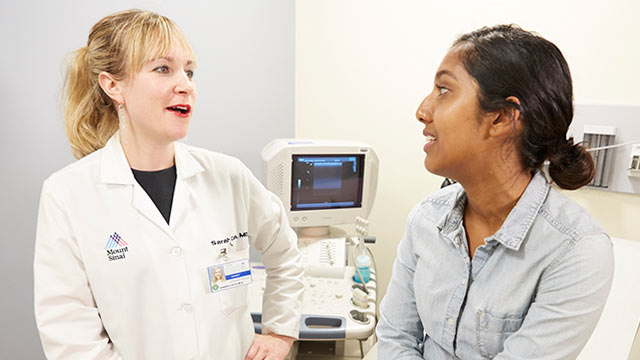
Diagnostic Services for Breast Cancer
If breast imaging, screening, or a physical exam, along with your symptoms such as a lump, indicates the possible presence of cancer, we perform tests to confirm the presence of cancerous cells.
Image-guided biopsies enable us to determine whether a suspicious breast mass is malignant and develop the most appropriate course of treatment. A biopsy involves removing cells or a small piece of tissue that we believe may be cancerous and examining it under a microscope.
To test for breast cancer, we may use one of the following procedures:
- Clinical breast examination—physical exam
- Imaging—technologies such as mammography, computerized tomography (CT) scanning, magnetic resonance imaging (MRI), X-rays, ultrasound testing, positron emissions tomography (PET) scanning, and breast molecular imaging
- Digital tomosynthesis—advanced imaging that creates three-dimensional images of the breast
- Fine needle aspiration (FNA) involves inserting a very small needle to extract a small amount of fluid or a few cells for testing. This test is a quick way to distinguish between a liquid-filled cyst and a solid tumor. We typically perform an FNA here. The discomfort lasts only a few minutes.
- Core needle biopsies are similar to FNAs, but use a larger, hollow needle to remove several tissue samples, each about the size of a grain of rice. We do a core biopsy when we are assessing a lump that we can see on a mammogram, MRI, or ultrasound. This is a relatively safe and quick procedure and requires the use of a local anesthetic.
- Stereotactic biopsies use two sets of low-dose X-rays for guidance. With this procedure, our radiologist makes a small incision to remove several tissue samples. Less invasive than a surgical (excisional) biopsy, this procedure takes place in a specially equipped room, but not in an operating room.
- Excisional (or surgical) biopsy is an outpatient procedure that takes place in an operating room and requires light sedation. We can remove either the entire mass of suspicious tissue or a large sample. We test the margins, or edges, of the sample to see whether we removed the entire tumor. If we determine that you do have cancer, we may also test the tissue to help us determine the best course of treatment.